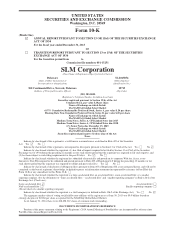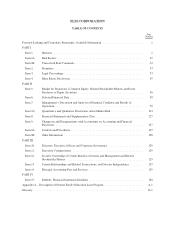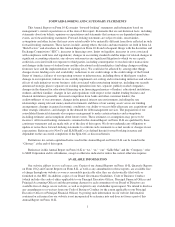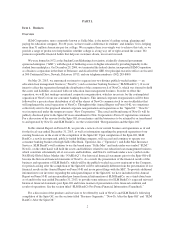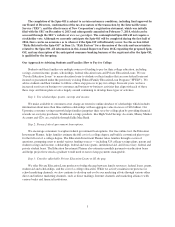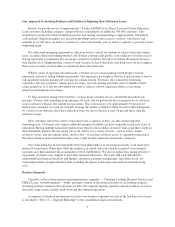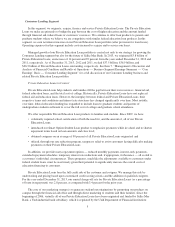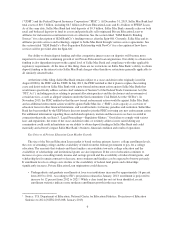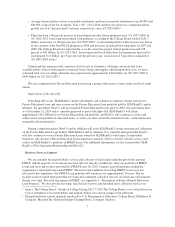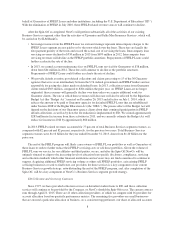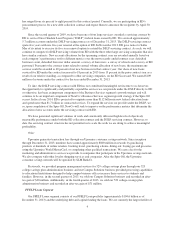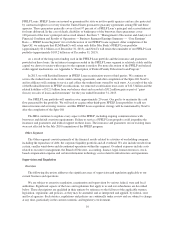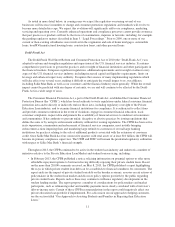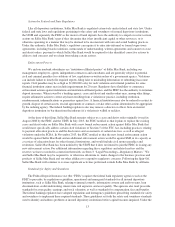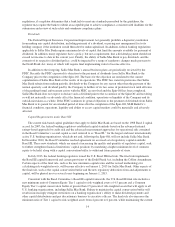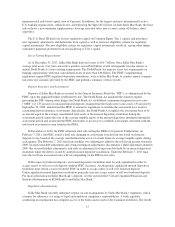Sallie Mae 2013 Annual Report Download - page 7
Download and view the complete annual report
Please find page 7 of the 2013 Sallie Mae annual report below. You can navigate through the pages in the report by either clicking on the pages listed below, or by using the keyword search tool below to find specific information within the annual report.Consumer Lending Segment
In this segment, we originate, acquire, finance and service Private Education Loans. The Private Education
Loans we make are primarily to bridge the gap between the cost of higher education and the amount funded
through financial aid, federal loans or customers’ resources. We continue to offer loan products to parents and
graduate students where we believe we are competitive with similar federal education loan products. In this
segment, we earn net interest income on our Private Education Loan portfolio (after provision for loan losses).
Operating expenses for this segment include costs incurred to acquire and to service our loans.
Managed growth of our Private Education Loan portfolio is central not only to our strategy for growing the
Consumer Lending segment but also for the future of Sallie Mae Bank. In 2013, we originated $3.8 billion of
Private Education Loans, an increase of 14 percent and 39 percent from the years ended December 31, 2012 and
2011, respectively. As of December 31, 2013, 2012 and 2011, we had $37.5 billion, $36.9 billion, and
$36.3 billion of Private Education Loans outstanding, respectively. See Item 7. “Management’s Discussion and
Analysis of Financial Condition and Results of Operations — Business Segment Earnings Summary — ‘Core
Earnings’ Basis — Consumer Lending Segment” for a full discussion of our Consumer Lending business and
related Private Education Loan portfolio.
Private Education Loans in Context
Private Education Loans help students and families fill the gap between their own resources, financial aid,
federal education loans, and the total cost of college. Historically, Private Education Loans have not replaced
federal aid and education loans. However, the interplay between federal and Private Education Loans, their
respective terms and conditions and interest rate structures has changed significantly over time. Most notably,
over time, federal education lending has expanded to include loans to graduate students and parents of
undergraduate students sufficient to cover the full cost of college and graduate school attendance.
We offer responsible Private Education Loan products to families and students. Since 2009, we have:
• voluntarily required school certification of both the need for, and the amount of, all of our Private
Education Loans;
• introduced our Smart Option Student Loan product to emphasize payments while in school and to shorten
repayment terms based on loan amounts and class level;
• obtained cosigners on an average of 90 percent of all Private Education Loans originated; and
• offered, through our rate reduction program, temporary relief to assist customers having difficulty making
payments on their Private Education Loans.
In addition, we provide many repayment options — reduced monthly payments, interest-only payments,
extended repayment schedules, temporary interest rate reductions and, if appropriate, forbearance — all scaled to
a customer’s individual circumstances. These programs, much like the adjustments available to customers under
federal student loans, must be used wisely given their potential to significantly increase the overall costs of
education financing to customers.
Private Education Loans bear the full credit risk of the customer and cosigner. We manage this risk by
underwriting and pricing based upon customized credit scoring criteria and the addition of qualified cosigners.
For the year ended December 31, 2013, our annual charge-off rate for Private Education Loans (as a percentage
of loans in repayment) was 2.8 percent, as compared with 3.4 percent for the prior year.
The core of our marketing strategy is to generate student loan originations by promoting our products on
campus through the financial aid office and through direct marketing to students and their families. Since the
beginning of 2006, virtually all of our Private Education Loans have been originated and funded by Sallie Mae
Bank, a Utah industrial bank subsidiary, which is regulated by the Utah Department of Financial Institutions
5

